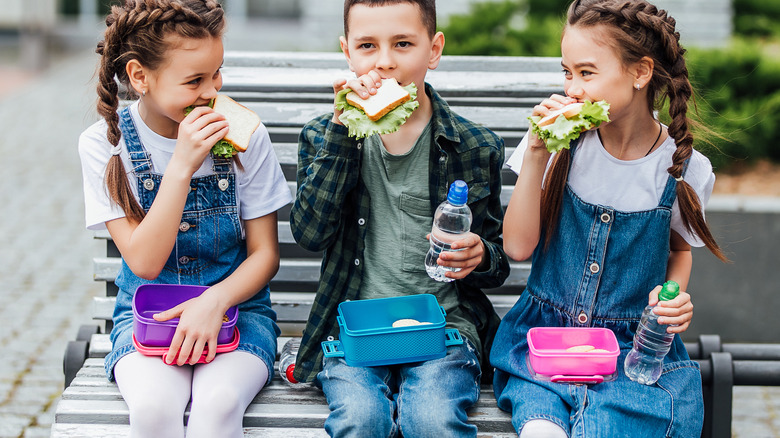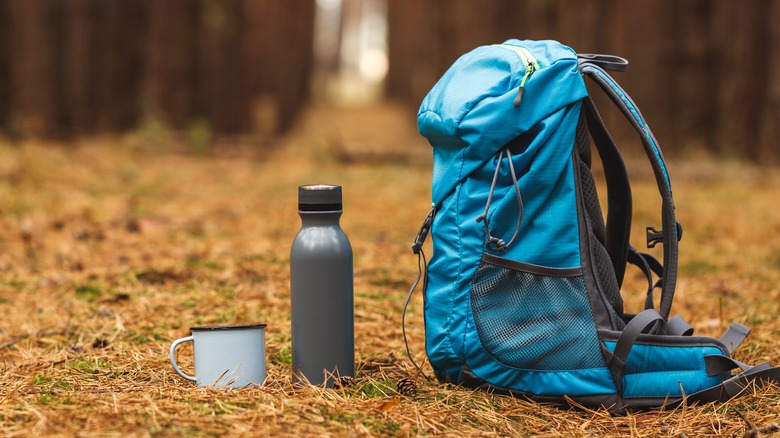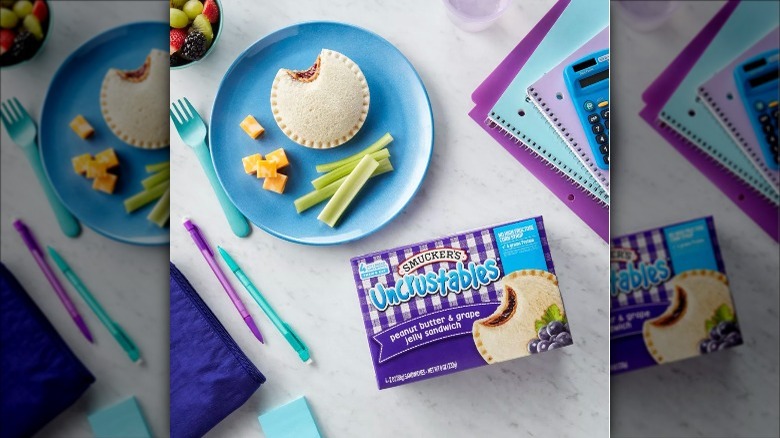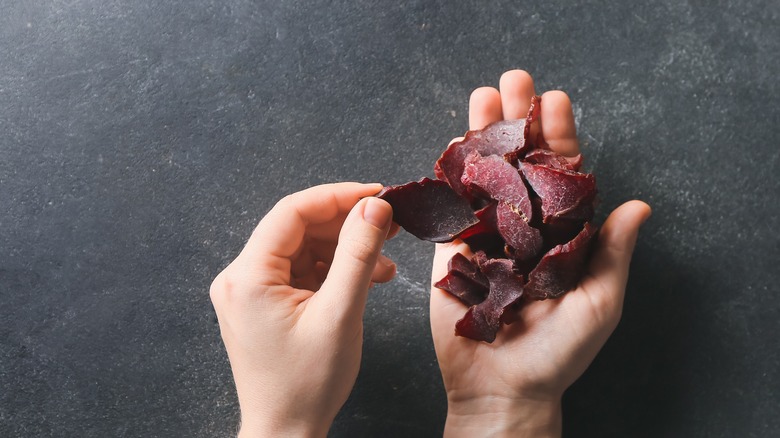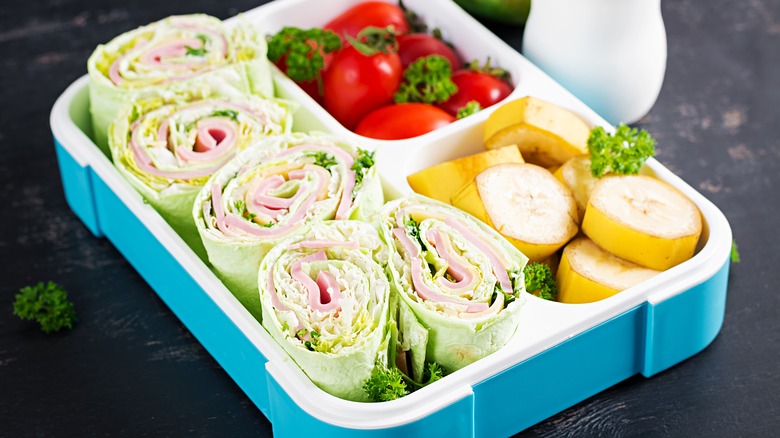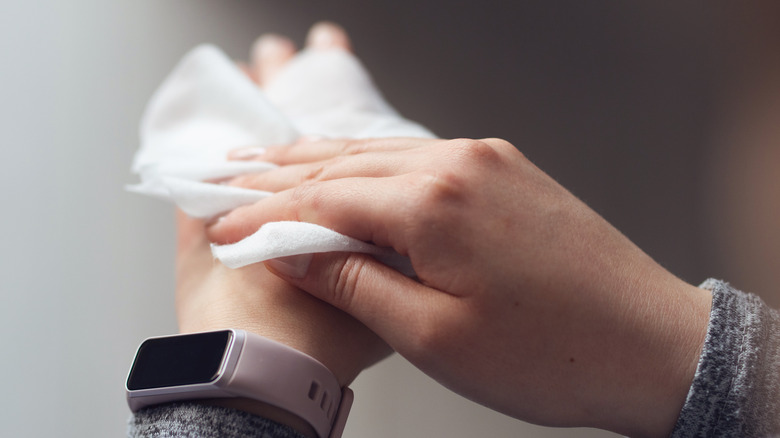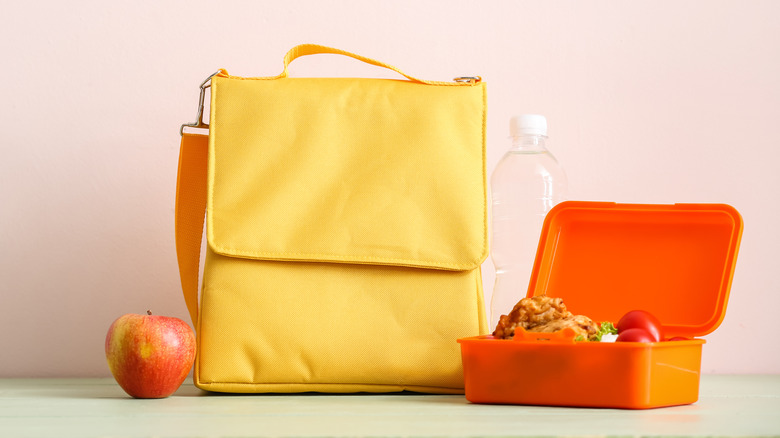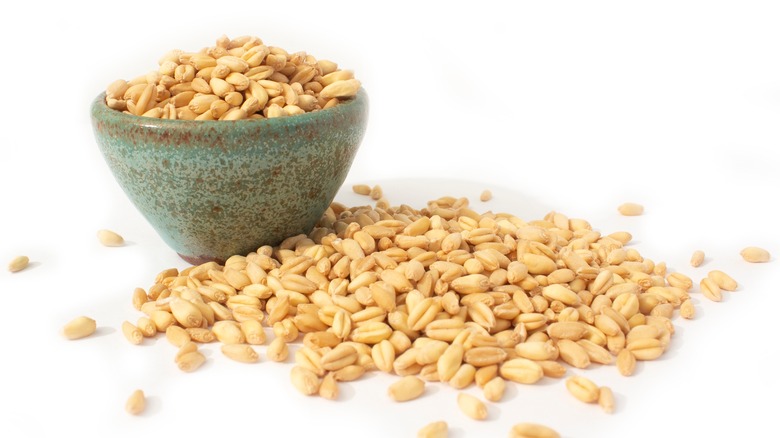Tips For Packing Better Field Trip Lunches
Packing lunches on a normal day can be a tedious and not particularly exciting experience. But then, the letter comes home. The forms are turned in. And suddenly, you find yourself having to pack a lunch for a field trip. The monotony of the regular lunchtime packing has gone out the window, and in its place, you now find chaos, questions, and a need to pack something entirely outside of the typical realm of school lunches. The task can be exhausting and, if not done right, can lead to a lunchtime flop.
If you don't know where to begin, fear not, for we are here to help. We have compiled a list of tips for packing better field trip lunches. With our help, you will absolutely win the "best field trip lunch," which is an award that is totally normal to want and absolutely achievable. So don't worry — you've got this.
1. Know the location
The first thing to consider is where the field trip will take place. This piece of information will help inform every decision after this point. For example, are they going somewhere hot or cold? If the field trip is somewhere that is likely to be hot, you might not want to pack something that can melt easily, like a piece of chocolate. At the same time, it is important to note whether or not refrigeration will be available. If not, that too will affect what you will want to pack.
Aside from the practical matters, it is also important to recognize food rules that may exist at locations, such as not allowing straws or other items that could harm animals. Additionally, some religious or cultural buildings may have restrictions on certain foods. It is important to recognize these restrictions and be respectful when packing field trip lunches.
2. Use appropriate packing devices (hot or cold)
Food temperature is vitally important to food safety. Food left sitting in the 40 to 140-degree Fahrenheit range is considered to be in the "danger zone" by the United States Department of Agriculture, and not the exciting "Top Gun"-style danger zone. No, the foodborne illness danger zone is not at all enjoyable.
According to the USDA, perishable foods, such as eggs, meats, cheese, and cut fruits, can only be left out of refrigeration for two hours. That timeframe drops to one hour if the outside temperature is above 90 degrees Fahrenheit. The USDA also points out that these timeframes also apply to prepackaged foods that are often marketed for lunchtime. This is why it is so important to know the location and to pack appropriately.
With this in mind, if you have food that needs to be kept cold and no refrigerator is available, consider using an ice pack to keep the food cold. Or consider using an insulated container such as this one from Thermos to keep items hot or cold for five to seven hours.
3. Consider prefab foods
Packing lunches can be an exhausting task, and there is no shame in taking a shortcut or two; they are there for a reason. Prefab foods can be the ideal way to go sometimes, especially when it comes to packing field trip lunches. Companies like Babybel make individual cheese wheels coated in wax that are easy to throw into any bag. It should be noted that even though they are sealed, they still require refrigeration.
For the main course, toss in Uncrustables from Smucker's, which are now available in two varieties: the classic peanut butter and jelly sandwich, and ham and cheese Bites. A package of Uncrustables comes frozen and thaws within an hour. According to the company's website, after thawing, the PB&J sandwiches can sit at room temperature for six to eight hours, while the Bites can sit out for up to two hours. This means that, if planned correctly, you simply need to toss one into the lunch bag, and you won't have to worry about it going bad. To round out the meal, consider other nonperishable options, such as a bag of pretzels or popcorn.
4. Pack foods that don't need refrigeration or re-heating
To avoid foodborne illnesses associated with food temperature, shelf-stable products are the name of the game. In this arena, you can get creative. If your child usually has meat and cheese as part of their lunch, try swapping it out for jerky and freeze-dried cheese snacks, such as Moon Cheese. You can also consider bags of popcorn, chips, or dried fruit, or create your own healthy snack mix.
If you do not want to go all-in on processed foods, there are other options that do not require refrigeration. For example, foods like almonds and granola are safe to eat at room temperature, as well as fresh produce, such as apples, bananas, and pears. When washing and prepping fruits and vegetables, avoid cutting them up beforehand, as that starts the clock ticking on their food safety. Instead, consider small, easy-to-eat varieties, such as the seedless Halos oranges, berries, or snacking peppers.
5. Pack ready-to-eat foods
Ready-to-eat does not necessarily mean highly processed; it simply means making sure the food can be enjoyed from the get-go and does not require extra prep. Aside from avoiding foods that require refrigeration or reheating, you also need to consider how the food will be eaten. For example, sending foods that require cutlery, either because they need to be cut up or because they cannot be eaten without a fork or spoon, can spell disaster on a field trip. This is not the time for a hot Thermos of your homemade soup. Instead, opt for sandwiches, cheese and crackers, ham and cheese pinwheels, and other items that can be eaten with their hands.
Additionally, many field trip lunches are considered "brown bags" and may request that kids bring only disposable items. Sadly, this can also mean they can't bring a reusable water bottle, so you may need to pack one they can throw away after finishing it.
6. Pack a wet wipe or three
Speaking of eating with our hands, kids are not exactly known for their excellent sense of personal hygiene. While on a field trip, kids are moving around a lot, touching things, and picking up germs. And it is possible that they may not have easily-accessible soap and water once it is time for lunch. The Centers for Disease Control and Prevention stresses how important it is for children to wash their hands before eating lunch. While using things such as hand sanitizer can help kill germs, it is not going to help as much when hands are physically dirty or greasy.
That is where wet wipes, such as these from Royal, come into play. Throw a few of these, along with hand sanitizer, into your kid's lunch bag and they can use them to help clean off their hands before eating. Throwing in a few extra for the end of the meal isn't a bad idea either, as they can wipe any sticky food residue off their hands before returning to their field trip fun.
7. Use a practical lunchbox
Using a practical lunchbox can mean different things depending on the location. For example, children may be instructed to bring a fully disposable lunch in some places, such as parks. For this, the practical lunchbox can be as simple as a brown paper bag.
However, even if children are allowed to bring a more sophisticated lunchbox, practicality is still important. Sometimes, all of the lunchboxes are tossed into a big box that gets loaded onto the bus. Other times, the children may be responsible for carrying their own bags. In cases like this, even though options like bento boxes are adorable and would be practical for school, they may not work for a field trip. If it doesn't have a handle it can be hard to carry.
If it works within your budget, consider a lunchbox like this one from Pottery Barn. This bag has a handle for easy carrying, a side pocket that will fit either a Thermos or a water bottle, and plenty of room inside for an ice pack.
8. Pack a good water bottle
A reliable water bottle is key to any good field trip lunch. While basic plastic water bottles may do the trick at school, in the unpredictable landscape of a field trip, you want something that is undefeatable. This means, first and foremost, a tight seal. If a water bottle leaks at school, it can easily be refilled. That may not be the case on a field trip. On this note, it should also be easy to drink without spilling, such as this water bottle from Takeya.
Second, consider the size. If it's too small, your child may run out of water. On the other hand, it is unlikely your child will need a gallon of water to make it through the day and if it's too large it will just weigh them down.
You may also want to consider the practicality of whether it can fit in a sleeve of the lunchbox or perhaps strap onto the lunchbox for easy carrying. If your child is sensitive to temperature, you may want to specifically pack an insulator to keep water cool.
9. Consider dried or leathered fruit
It is natural to want a child to have fruit with every meal as it's an important part of the daily diet. However, when a child is on a field trip including fruit in their lunch can be tricky. Fruit cups, such as those from Dole, are good for a typical lunch, but the liquid and potential sticky mess are not particularly practical for a field trip lunch. Similarly, items, such as oranges or kiwis, that require peeling may not be something the child is able to do yet.
Luckily, there are other options though: freeze-dried or dried fruits and fruit leather. Many fruits come in freeze-fried or dried form, such as banana chips, strawberries, apples, and mango pieces. You can even buy or make your own fruit leather. While they are not a perfect substitute for fresh fruit, these versions can do the trick on a field trip.
10. Do not overdo it
Finally, don't overdo it. It can be tempting to pack a big lunch for your child's field trip because they'll likely be moving around more than usual and may be hungrier. You may also want to pack more options since their field trip lunch will likely be different than their non-field trip lunch. But do not fall into the trap of over-packing.
Packing too much food will lead to food waste, resulting in either perfectly good food being thrown away or your child having to carry around uneaten food for the rest of the day. You know your child best and how much they eat; try to keep it within the normal range of lunch. They can always have a snack when they get home. Who knows, they may even be so excited and distracted by all the cool field trip stuff that they eat less than usual. Whatever the case may be, packing a field trip lunch is stressful enough; no need to overdo it.
